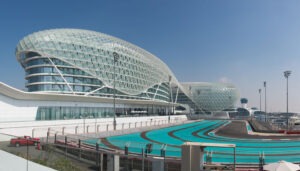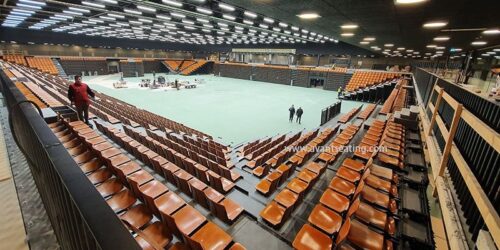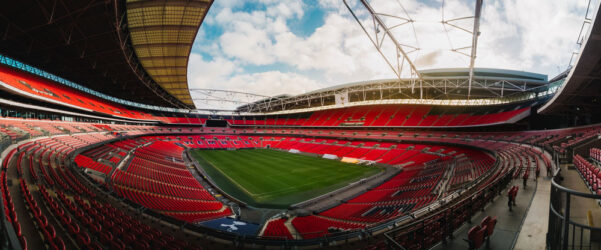Timeline for Stadium Projects
 As early as possible, it is important to develop a project timeline that specifies everything from various key target dates to the grand opening. It is important for everyone involved to understand the complete timeline from start to finish, including the many construction phases involved. The project timeline should begin with the very first appointments of personnel.
As early as possible, it is important to develop a project timeline that specifies everything from various key target dates to the grand opening. It is important for everyone involved to understand the complete timeline from start to finish, including the many construction phases involved. The project timeline should begin with the very first appointments of personnel.
A cohesive and comprehensive organizational structure is a vital part of this process. Everyone, including contractors and consultants, must have clearly identified roles in the construction of all stadiums. There must be universal approval and understanding of the many diverse roles that everyone will play in completing the project.
The clear definition of roles is only the beginning. Target completion dates for various aspects of the project must be well-planned and stringently monitored. Whenever there is a failure to adhere to a rigorous timeline, delays and cost overruns are common. Since the location, size and nature of each stadium project is vastly different, the timeline must be carefully customized for the specific stadium to be constructed. Nonetheless, each stadium construction timeline will include a series of clearly identifiable phases:
Project Kickoff – Six Months
This is the period during which a great deal of brainstorming occurs as the basic concepts for the project evolve. A thorough location study will examine all of the possible places where the new facility might be located. Various feasibility studies will be commissioned.
A cadre of critical technical, financial and legal advisors and specialists will be assembled. Each will be assigned to oversee various aspects of the process. This is the point in time when a realistic and concrete financing strategy will be developed.
During the inception phase, an outline of literally every aspect of the endeavor will be discussed and agreed upon. The future direction of the project will be clearly identified in a disciplined way to set the stage for the next phase.
Conceptual Phase- 6 months
This is the stage during which the stadium developer will see to it that detailed documents are prepared that specify the project brief, budget, construction process and urban planning considerations. Once these core documents are completed, architects and key consultants can be commissioned to create an overall design concept that respects the parameters identified in the core documents. By now, the developer will have purchased or otherwise acquired the site of the new stadium, so the architects and consultants can proceed in a specific, targeted way.
Project Design – 12 months
This vital phase can often consume a year or so. Adequate amounts of time have to be devoted to carefully establishing a detailed design that respects the budget and all required standards. Local authorities will review the project’s plans. Licensing requirements must be met before any construction can begin. The acquisition of needed licenses can be time-consuming on occasion. If there is an intent to implement separate tender and construction phases, they must be clearly noted before the tender process commences.
Request For Tender – 3 months
Just prior to the commencement of the tender phase, the developer, architect, advisors and consultants will have collaborated to identify the most capable and qualified potential contractors. Possible contractors may be identified at the local, national or even the international level.
After the complete scope and essential details of the project have been delineated and approved by the client, issuance of the invitations to tender proceeds. Appropriate licensing must have been completed prior to this phase. When tender bids are submitted, they are analyzed in detail. Usually, negotiations will ensue with the preferred contractors to finalize construction costs and to establish a projected completion date. At the conclusion of this process, a general contractor is selected and construction begins.
Construction – 24 months
The estimated timeframe for constructing the facility will vary based upon the stadium’s scope and complexity. There are many parts of the construction phase, including the full assignment of sub-contractors that allows the project to continue to move toward final completion. Proper coordination of everyone involved allows the process to continue on-time and within the budget.
As a part of this phase, all necessary building permits, occupational licenses and safety certificates have to be secured. The fulfillment of all permit and licensing requirements will assure that the completed stadium is fit for the purposes for which it was designed. The role of legal and other advisors is key to assuring that all requirements are being met. The success of this phase will allow the facility to be fully occupied as the eventual date of the first competition approaches.
Handing Over the Stadium – 3 months
Before the contractor can hand over the completed facility to the developer, the architects and engineers will have identified corrective work that must be undertaken. The general contractor, in cooperation with the relevant sub-contractors, then sees to it that the corrections are made.
At this point, the new stadium is handed over to the developer. The facility’s management team will require some time to acquire and fine-tune all utilities and other services. Once again, a series of licenses and permits will be needed that are relevant to the various retail, catering and other commercial services involved. Safety inspectors will be a part of this overall process of getting the stadium’s services ready to use. Finally, security and access systems will have to be carefully tested to ensure proper operation and regulatory compliance.
It is always advisable to organize one or more friendly games or matches before the final handover takes place. Such contests should be low-key events with minimal attendance. Refinements may be noted that will add to the enjoyment of the spectators or promote the smooth operation of the facility.
Final Post-handover Phase – 6 months
Once the contractor has formally handed the new stadium over to the developer, a very important period still remains. In the months after the handover, the stadium management will fully test all systems and services. With the venue fully operative, management can identify further improvements or corrections that still may be required.
The completion of all these phases will represent success in taking all stadiums from mere dreams to fully operational facilities.






